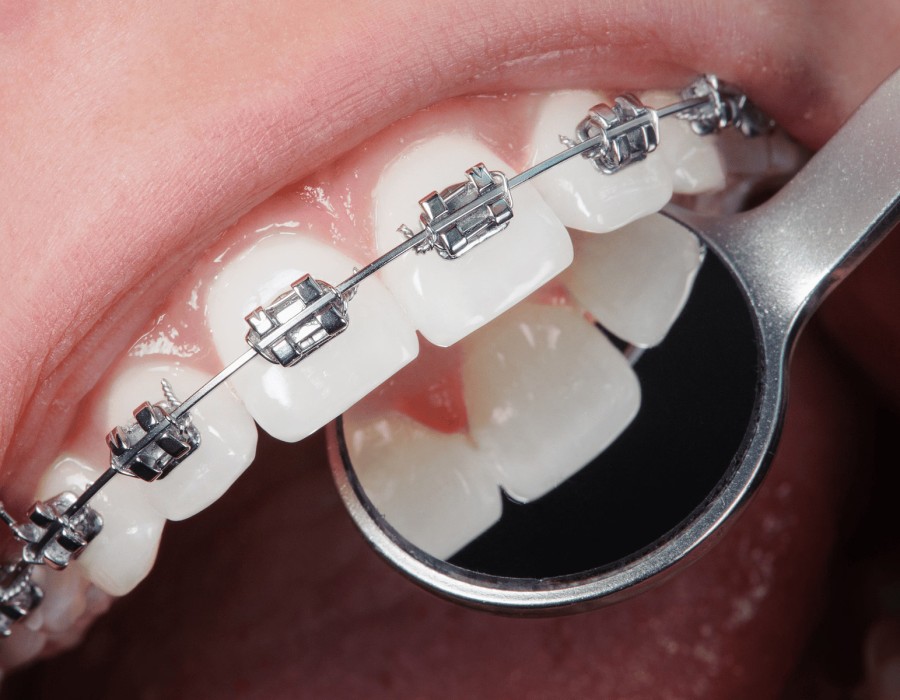Dubai is renowned for its state-of-the-art healthcare facilities, and orthodontics is no exception. The city offers a range of innovative orthodontic solutions designed to cater to the diverse needs of its residents. From traditional braces to cutting-edge aligner technologies, Orthodontists Dubai are equipped to provide top-tier care. This article explores the latest orthodontic solutions available in Dubai, their benefits, and what patients can expect from the treatment process.
Traditional Braces: A Time-Tested Solution:
Traditional metal braces remain a popular and effective orthodontic treatment. Comprising metal brackets bonded to the teeth and connected by wires and elastic bands, they are highly effective for correcting a wide range of dental issues, including misaligned teeth, overcrowding, and bite problems.
Benefits:
- Effectiveness: Traditional braces can address complex dental issues with precision.
- Durability: Made from high-quality stainless steel, these braces are robust and reliable.
- Cost-Effective: Often more affordable compared to newer technologies.
Considerations:
- Aesthetics: Metal braces are more visible, which might be a concern for some patients.
- Comfort: Can cause initial discomfort and require regular adjustments.
Ceramic Braces: Aesthetic and Effective:
Ceramic braces function similarly to traditional metal braces but use clear or tooth-colored brackets that blend with the teeth. This makes them less noticeable and a preferred choice for patients concerned about aesthetics.
Benefits:
- Aesthetically Pleasing: Less noticeable than metal braces.
- Effective: Capable of treating the same range of dental issues as traditional braces.
Considerations:
- Cost: Generally more expensive than metal braces.
- Fragility: Ceramic brackets can be more brittle and prone to breaking.
Lingual Braces: Hidden and Efficient:
Lingual braces are similar to traditional braces but are placed on the inside surfaces of the teeth, making them virtually invisible from the outside. They are an excellent option for patients seeking a discreet treatment.
Benefits:
- Invisibility: Hidden behind the teeth, making them a very discreet option.
- Effectiveness: Can handle complex dental corrections.
Considerations:
- Comfort: Can cause initial discomfort and speech difficulties.
- Cost: Typically more expensive due to their customized design and placement.
Clear Aligners: Modern and Convenient:
Clear aligners, such as Invisalign, are custom-made, removable trays that gradually shift the teeth into their desired positions. They are popular among adults and teenagers due to their discreet appearance and the convenience of being able to remove them for eating and cleaning.
Benefits:
- Discreet: Clear and virtually invisible.
- Removable: Can be taken out for eating, drinking, and cleaning.
- Comfortable: Smooth plastic trays are less likely to irritate gums and cheeks.
Considerations:
- Discipline Required: Must be worn for 20-22 hours a day to be effective.
- Cost: Often more expensive than traditional braces.
Self-Ligating Braces: Efficient and Comfortable:
Self-ligating braces use a specialized clip instead of elastic bands to hold the wire in place. This system reduces friction and can lead to shorter treatment times and fewer visits to the orthodontist.
Benefits:
- Efficiency: Potentially shorter treatment times.
- Comfort: Reduced friction can mean less discomfort.
Considerations:
- Cost: Generally more expensive than traditional braces.
- Visibility: Not as discreet as clear aligners or lingual braces.
The Orthodontic Treatment Process in Dubai:
1. Initial Consultation:
The journey begins with an initial consultation where the orthodontist examines your teeth, takes X-rays, and discusses your treatment goals. This is an opportunity to learn about the available treatment options and decide on the best course of action.
2. Customized Treatment Plan:
Based on the initial consultation, the orthodontist will develop a personalized treatment plan tailored to your specific needs. This plan will outline the recommended treatment, the estimated duration, and the expected results.
3. Treatment Implementation:
Once the treatment plan is finalized, the orthodontist will proceed with the placement of braces or the fitting of clear aligners. Regular visits to the orthodontist are necessary to monitor progress and make any needed adjustments.
4. Regular Adjustments and Monitoring:
Throughout the treatment process, you'll have regular check-ups every 4 to 8 weeks. These appointments are crucial for ensuring the treatment is progressing as planned and making any necessary adjustments.
5. Completion and Retention:
After achieving the desired results, the orthodontist will remove the braces or confirm that you have completed your aligner series. Retainers will be provided to maintain the new position of your teeth and prevent them from shifting back.
Benefits of Orthodontic Treatment in Dubai:
1. Enhanced Aesthetics
Achieving straight teeth can significantly improve your smile, boosting your confidence and self-esteem.
2. Improved Oral Health
Straight teeth are easier to clean and maintain, reducing the risk of cavities, gum disease, and other oral health issues.
3. Better Functionality
Correcting bite issues can improve your ability to chew and speak properly.
4. Preventive Care
Addressing dental issues early can prevent more severe problems in the future, saving time and money on potential dental procedures.
FAQs
1. How long does orthodontic treatment take?
The duration varies depending on the complexity of the case and the type of treatment. On average, it can range from 12 to 36 months.
2. Are orthodontic treatments painful?
Some discomfort is normal, especially after adjustments. However, advancements in technology have made treatments more comfortable than in the past. Over-the-counter pain relievers can help manage any discomfort.
3. Can adults benefit from orthodontic treatment?
Absolutely. Many adults seek orthodontic treatment to improve their smiles and oral health. There are discreet options like clear aligners and lingual braces available.
4. How often do I need to visit the orthodontist during treatment?
Regular visits are essential to monitor progress and make adjustments. These typically occur every 4 to 8 weeks.
5. What are the common types of orthodontic treatments?
Common treatments include traditional metal braces, ceramic braces, lingual braces, clear aligners (Invisalign), and self-ligating braces.





Comments